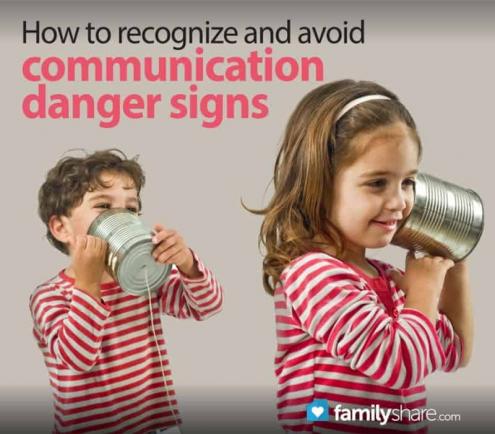
Communication is more than just talking. It is an exchange between people where talking, listening and understanding occurs and involves paying attention to what the other person is thinking and feeling. Good communication builds each other up, increases self-esteem and is uplifting.
We communicate with others every day. Communication is more than just words; it includes body language, facial expressions, and acts of service. Communication within a relationship is important because it helps each of us express our needs, wants and concerns to each other. Open and honest communication creates an atmosphere that allows us to express differences as well as love for one another. It is through communication that as a couple you are able to resolve the unavoidable problems that arise.
Communication is important in the making of a great marriage. Spencer W. Kimball, former president of The Church of Jesus Christ of Latter-day Saints spoke of the importance of good communication. "In my experience I find that in a large number of marital cases, the problem is lack of communication; the wires are down, the poles are burned, husbands and wives are jangling, and there is static where there should be peace. There is growing disgust and hate where there should be love and harmony."�
There are four danger signs in communication. When you find yourself doing any (or all) of these, there are potential problems. The Danger Signs are: 1) Escalation; 2) Invalidation; 3) Negative Interpretation; and 4) Withdrawal and Avoidance.
Escalation
This is "one-upping"� the other person. This can be done in the things you say and the way you say them or in raising the volume of your voice. When escalation occurs, communication starts shutting down quickly because you both want to be heard, but feel the other person is not listening. In order to correct an escalation problem, check your emotions regularly to assess if you are getting frustrated and upset. By checking your emotions, you will be able to control yourself and correct the problem before it begins.
Invalidation
This can be subtle or direct. Eye rolling or making statements like, "no, you do not really feel that way"� are actions of invalidation. When you feel invalidated, you tend to start shutting down. To correct this danger sign, be aware of how you respond to each other. If you feel invalidated, let your spouse know as this can often lead to much more serious difficulties.
Negative interpretation
This is when a person says something and you immediately think the most negative meaning of what was said. If you want to know what the other person really means, ask. You may be surprised at what he or she meant. Clarify the actual meaning of the statement; otherwise, it can lead to invalidation.
Withdrawal and avoidance
This can be done many different ways. The most common is walking away. Another way is ignoring the other person. Avoidance comes when you do not want to talk about the situation or solve the problem. When there is a person who tends to withdraw, the other person often pursues. If you feel you need a "time out"� to gather your thoughts so you don't escalate, it is acceptable. The way to appropriately withdraw is to tell the other person, "I need some time to think through this, let's come back in 30 minutes and we will finish discussing it."� The most important aspect of this is to actually come back and finish talking.
Each of us has our "favorite"� danger sign that we tend to do more often. Recognizing and acknowledging our own danger sign allows you to make changes. Notice that I refer to "our own"� danger sign. This allows introspection and not finger pointing.
It is important to work through and discuss how we communicate so we can continue to improve our relationships. Be open and honest with yourself. If you do not communicate well, take time to learn since we communicate daily with others. If you feel you are a good communicator, keep practicing and improving these skills.
Reference:
Fighting for Your Marriage: A Deluxe Revised Edition of the Classic Best-seller for Enhancing Marriage and Preventing Divorce (Markman, Stanley, & Blumberg, 2010)

